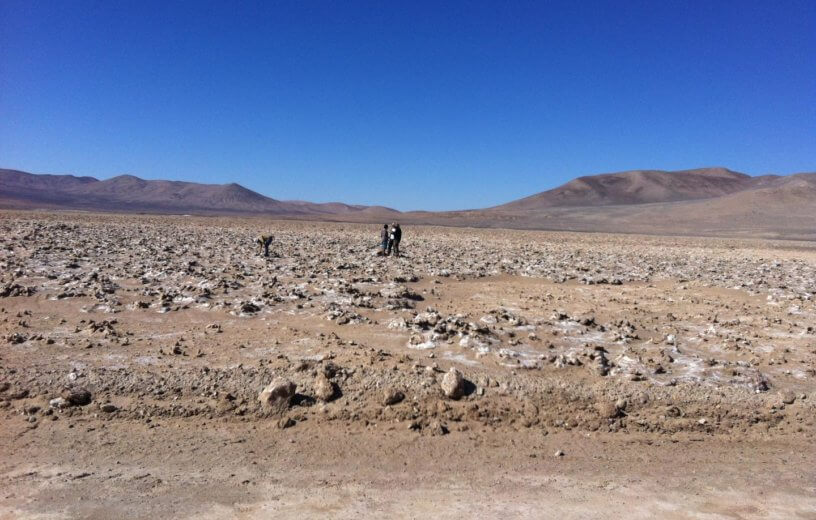PULLMAN, Wash. — Scientists have found bacteria regrowing in one of the driest places on Earth — a sign, they believe, indicating there could be some form of life lurking on Mars.
Researchers traveled to the driest parts of the Atacama Desert in Chile and studied the soil there because of its closeness to the environment on our planetary neighbor. In a place where it sometimes goes years or even decades without rain, microorganisms found living in the Atacama dirt gives planetary scientists like Dirk Schulze-Makuch of Washington State University hope that there might be such microbial life on the ultra-arid red planet.
“It has always fascinated me to go to the places where people don’t think anything could possibly survive and discover that life has somehow found a way to make it work,” Schulze-Makuch says in a university release. “Jurassic Park references aside, our research tell us that if life can persist in Earth’s driest environment there is a good chance it could be hanging in there on Mars in a similar fashion.”
When the team first went to the Atacama, in 2015, ironically, it rained for the first time in years. The timing couldn’t have been better though: the research team found an explosion of biological activity in the soil. The team took samples of the earth at various depths and found several indigenous species of microbial life that evolved to survive in this unique climate. Interestingly, when the team returned to the site in 2016 and 2017 for follow-up samples, they found those microscopic communities were slowly becoming dormant as the ground returned to its long-lasting dry condition.
“In the past researchers have found dying organisms near the surface and remnants of DNA but this is really the first time that anyone has been able to identify a persistent form of life living in the soil of the Atacama Desert,” notes Schulze-Makuch. “We believe these microbial communities can lay dormant for hundreds or even thousands of years in conditions very similar to what you would find on a planet like Mars and then come back to life when it rains.”
Because prior research has shown the existence of frozen water in the soil on Mars, the scientists believe that microorganisms in the soil there may also have adapted to the conditions of the planet. They believe their study may present the strongest evidence that life certainly could exist on Mars, but they hope to examine other areas on Earth that have similar conditions to see if they can replicate their findings.
“There are only a few places left on Earth to go looking for new lifeforms that survive in the kind of environments you would find on Mars,” says Schulze-Makuch. “Our goal is to understand how they are able to do it so we will know what to look for on the Martian surface.”
The full study was published Feb. 26, 2018 in the Proceedings of the National Academy of Sciences.
